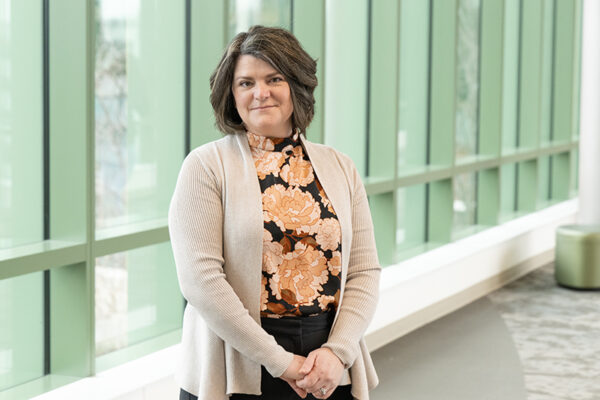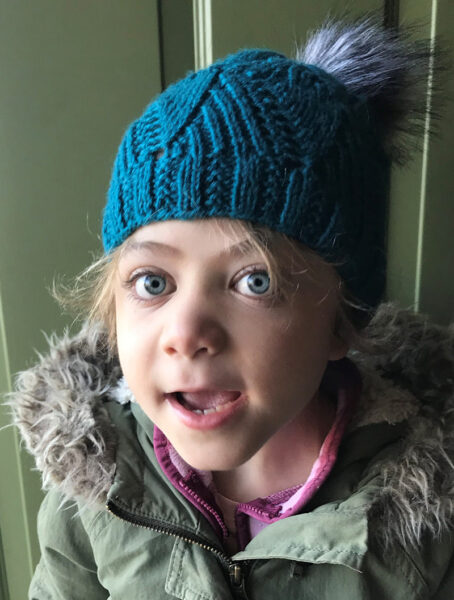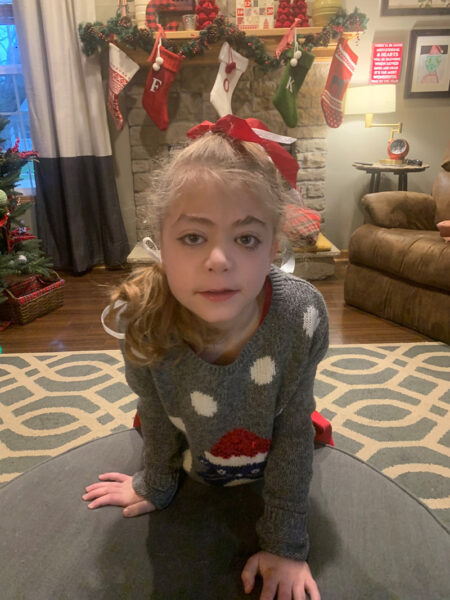
Christine Cunningham is a regulatory specialist at Akron Children’s
Halfway through her pregnancy, Christine Cunningham received a difficult diagnosis. Her 20-week ultrasound revealed a cephalocele in her infant daughter’s skull, a rare defect where the neural tube does not close properly during gestation, leaving part of the brain exposed.
Follow-up scans showed another rare disorder — agenesis of corpus callosum — an abnormality where the tissue that connects the left and right sides of the brain is missing.
It was the beginning of a long medical journey for Christine, a regulatory specialist at Akron Children’s, and her daughter, Finley.
“My husband and I both grew up in families that had people with special needs, but nothing prepares you for your own child or one that presents in such a unique way,” said Christine.
“What started out as a scary external issue gave us the opportunity to know what was going on internally with Finley’s brain, so we had the ability from day 1 to make decisions about early interventions and treatments. A lot of the issues that she has are congenital, rare birth defects that when coupled together makes them even more rare.”
On the day she was born, Finley was life-flighted to Akron Children’s to have a shunt placed to relieve the pressure on her brain. Since that time, she has undergone cranial reconstruction and more than a dozen other surgeries to address a variety of issues, including a Chiari malformation, a condition where brain tissue extends into the spinal canal.
Today, 8-year-old Finley has multiple disabilities that require regular medical care from specialists at Akron Children’s, including occupational therapy, physical therapy and rehabilitation services. Her favorite is aquatic therapy.

Finley Cunningham, 8 years old, has two rare conditions: a cephalocele and agenesis of corpus callosum.
“The Akron Children’s family of providers has been a blessing, and we owe Finley’s continued success to each clinician who has been involved with her care,” said Christine.
She said despite her challenges, Finley continues to achieve remarkable milestones.
“She has global developmental delays, but she’s also a miracle,” said Christine. “While she has challenges participating and understanding functional interactions, she excels in her ability to retain information and is very smart. She is nonverbal, and her mobility and vision are significantly impacted. She continues to grow socially and developmentally every day. She can walk. She can count. She knows the alphabet. She can spell. She loves music, swimming, wind and sand.
“She’s currently in second grade, and she rides the school bus with her peers. That was a big milestone for her. She can even walk up the bus steps by herself.”

Finley continues to achieve remarkable milestone.
Christine said as the parent of a child with special needs, she’s accustomed to people asking questions, but it’s jarring when they make assumptions.
“When folks look at her, they don’t know what box to put her in, and Finley doesn’t necessarily fit a box,” she said. “She has a problem list that’s a mile long. A lot of the symptoms might present as one diagnosis, but that’s not really her underlying issue. It’s important to understand that many people have multiple disabilities, and you should ask questions, rather than make assumptions.”
Feb. 28 is Rare Disease Day, a time to raise awareness and advocate for those living with rare diseases and their families. Christine said it’s a day close to her heart.
“There are all these recognition days and months for specific conditions,” she said. “It was special for me to learn that there was something called Rare Disease Day. That lit me up, because maybe that’s where we belong. It is helpful to have a sense of community to not feel alone.”
After staying home to care for Finley for 5 years, Christine returned to work in 2019.
“Finley has a unique medical history, including multiple surgeries and the potential for seizures. When I felt like Finley was at a point where she was able to go out in the community without me, I thought a lot about where I wanted to go back to work. I didn’t want to just go to any job. I wanted to work for an organization I believe in and touches so many lives like how they have helped my family,” she said.
Christine started at Akron Children’s in the NeuroDevelopmental Science Center before transferring to her current role in Human Resources. She recently joined the hospital’s All Abilities Employee Resource Group, an employee-led group dedicated to promoting inclusion and access for employees, patients and families.
“Our members have a connection to this hospital,” she said. “I hear that a lot from other employees who have kids with special needs. We chose to work here because of our personal relationship with the hospital. That builds long-term commitment and service. We’re not going anywhere. Akron Children’s is more than a job.”










